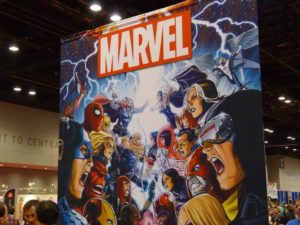
Charissa Roberson
***CAUTION: Here there be spoilers!***
Marvel’s animated series “What If…?” is quickly drawing to a close, with the final episode set to premiere on Disney+ on Sept. 29. In each 30-minute episode, the series reveals how events might have played out if an MCU character had made a different choice than they did in the “canon” timeline. Although the premise seems harmless and fun, Marvel’s first animated series has proven itself to be one of the darkest MCU installments yet.
The very principle of “What If…?” is that events do not unfold in the same way we have seen previously – and, by the same token, familiar characters do not have the same fates. Main Avengers, such as Iron Man, Thor, Black Widow and Captain America, are no longer “protected” by their status as leading characters. Instead, in “What If…?”, we see these MCU figureheads killed off quickly, repeatedly and often brutally, far from the meaningful sacrifices of “Avengers: Endgame” (2019).
In Episode 6, for example, T’Challa/Black Panther, Rhodey/War Machine and Tony Stark are all murdered by Killmonger in less than five minutes. In Episode 3, an assassin targets the Avengers and kills almost all the core members before they can ever assemble. And, of course, in Episode 5, a zombie apocalypse transforms most of Earth’s mightiest heroes into brain-eating machines.
“What If…?” doesn’t elicit the same stirring, uplifting emotions as a typical MCU production. On the contrary, the animated series has a grim undertone, a pervasive sense of danger and moments of pure horror. No one is safe. Victories, when they do come, are bittersweet, and hope is mixed with fear and grief. Rarely do episodes have happy endings, even more rarely resolved ones. However, “What If…?” brings something different to the MCU – a dose of reality.
Ironically, Marvel’s first animated series delves closer to the complexity, loss and failure of real life than any of the live-action films and shows to precede it. For example, in Episode 4, Dr. Strange becomes consumed by grief after losing the love of his life. He pursues darker and more potent sources of power until he becomes a monstrous version of himself, and, by trying to alter a fixed point in time, he destroys his own reality. Although the episode is horrifying, it emphasizes how easily Dr. Strange could have gone down such a path. In many cases, if our heroes had not chosen the “noble” way, their great power could have devastated the world.
This is one of the most unsettling and thought-provoking aspects of “What If…?”: that the alternate scenarios it proposes are not improbable. In fact, “What If…?” raises the idea that perhaps the events we see in the “canon” MCU films and shows are – like the victory of “Endgame” – the one outcome in fourteen million where our heroes win. In yet another breakthrough for the studio, Marvel’s venture into the realm of animation has brought us the most pragmatic look at the MCU so far.



